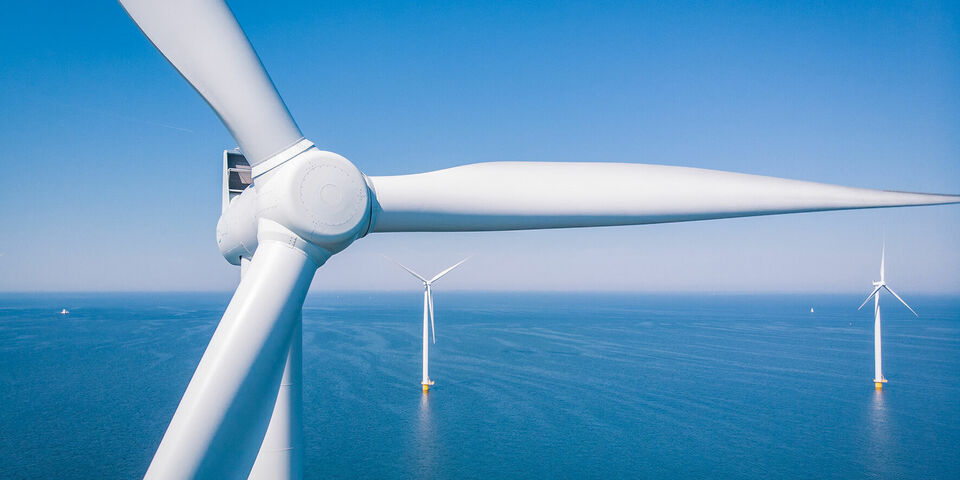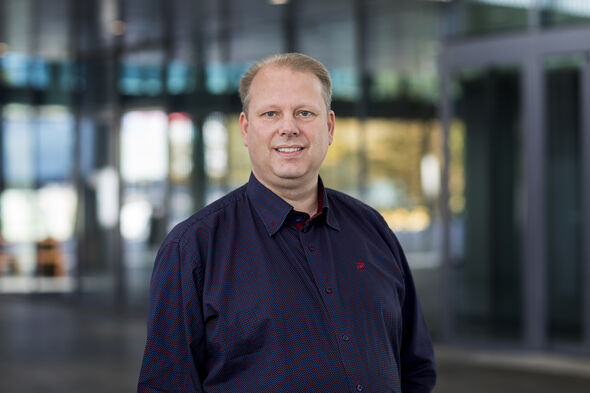Prof Talk | Hydrogen factory at sea
Hydrogen seems to be the key word in the energy transition, but before it can be utilized, the switch to sustainable production must be made. The Volkskrant national newspaper reports that the North Sea will provide the hydrogen fields of the future, but just how ideal is the production of hydrogen at sea? TU/e hydrogen production experts Jan Philipp Hofmann and Martin van Sint Annaland have their doubts and emphasize the importance of leaving the door open for other alternatives.
To achieve the aims of the Paris Climate Accord people are looking increasingly to hydrogen. A versatile element, it can be used as an energy carrier, directly as fuel, and as the raw material for various chemical processes - the production of artificial fertilizer is just one example. But hydrogen can also be used to ‘store’ renewable energy temporarily. Hydrogen can be produced with the aid of electrical energy and water and then used, for example, in the conversion process that takes place in a fuel cell, or in combustion to generate electricity or heat.
As yet, the majority of hydrogen production is ‘grey’; produced by the conversion of fossil fuels. Last week the World Energy Council announced that in view of the Climate targets this has to change and that the industry should shift towards the production and use of green hydrogen.
Sustainable challenges
The hydrogen consortium North Sea Energy aims to have the first hydrogen factory at sea operational before the end of the year and has started researching which techniques this should involve. This immediately resolves a number of sustainable challenges, says Jan Philipp Hofmann, Assistant Professor at the Inorganic Materials & Catalysis group (Chemical Engineering and Chemistry). “The production of energy from, say, wind is difficult to gauge. During a period with little wind we have shortages, whereas major storms result in a surplus. An energy surplus of this nature can be conveniently stored using hydrogen and it is very efficient if the storage is carried out close to the production location.”
Both Hofmann and Professor of Chemical Process Intensification Martin van Sint Annaland stress that the entire cycle must be green if the hydrogen can be said to be a renewable fuel. “In the combustion of hydrogen only water is released, no contaminants. So once you have hydrogen, it is a very clean fuel. The production of hydrogen from natural gas is far and away the cheapest option, partly because the CO2 involved is simply emitted,” says Van Sint Annaland.
This presents a job for government, believes Hofmann. This CO2 emission could be taxed, for example. “As yet, green hydrogen is not competitive. But a life cycle analysis, in which the CO2 emission is also accounted for in the price, gives a very different picture.”
As an intermediate step we could develop the capture of CO2 - carbon capture, as it is known - in the grey production of hydrogen, says Van Sint Annaland. “We are working on new reactor concepts for this, whereby pure CO2 is captured. This can then be used directly to make other products or can be stored. It isn't an ultimate solution but in the short term it would certainly be a logical first step in the energy transition. Ultimately, we need to move towards sustainable hydrogen production, using electrolysis. A good place to do this is at sea, although the water used in electrolysis must be ‘clean’; saltwater cannot be used. And in terms of infrastructure and costs, the question remains what is more efficient, transporting steam or hydrogen? I think we should be seeking a combination involving solar energy, after all the possibilities offered by the North Sea are not limitless.”
Dependence
In Hofmann's group hydrogen production based on (photo)electrolysis is a key aspect of the work. Last week one of his PhD candidates, Longfei Wu, obtained his doctorate for his work on the scope for combining electrolyzers with solar cells. “This method shares the inherent disadvantage of dependence, in this case on sunlight. In order to gain more flexibility, the combination of various sources of electricity is clearly advisable. If hydrogen is to become the fuel of the future, 'green' really must become cheaper. In view of this we are investigating the use of cheaper and more widely available materials in the electrolyzers. Although this work is still in the fundamental phase, the initial results are promising,” says Hofmann.
Society must use energy more economically, that is a given. Likewise, there's no doubt that hydrogen can help us achieve this aim. But, says Van Sint Annaland, we must continue to develop techniques in parallel, and avoid putting all our eggs in one basket. Hofmann: “And change the way we think. Small steps are no longer enough.”




Discussion